
Mortellaro's Nursery
Shrubs, trees, ground covers, native plants, and seasonal color
Wholesale Only
Click on any of the alpha indexes below to view the corresponding lists of plants.
The default list is displayed alphabetically by common name for all plant types. You can view the plants by clicking on the Scientific Name or limit the plant type by using the drop down.
Plants actively being grown for the current season are shown -- selecting Discontinued Items will show plants we have offered in the past.
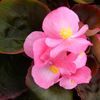
|
BegoniaBotanical Name: Begonia x semperflorens-cultorum
2024 Cultivars Begonia semp. 'Cocktail Gin' (Rose Pink) [ More Info ]
|
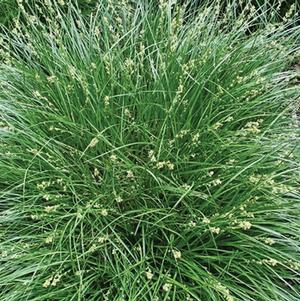
|
Berkeley SedgeBotanical Name: Carex divulsa
Evergreen clump forming grass that stays at an easily manageable size, while remaining maintenance and pest free once established in the landscape. Greenish flowers blend in with the bright green leaves, turning brown in the early winter. Ideal for grassy borders or mass plantings. Reseeds and returns in the spring easily. [ More Info ]
|

|
Blue Fescue GrassBotanical Name: Festuca glauca 'Elijah Blue'
[ More Info ]
|
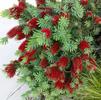
|
Bottlebrush, DwarfBotanical Name: Callistemon citrinus 'Little John'
From the land down under comes this spectacular blooming tree that prefers the warmer areas of southern Texas. The Bottlebrush is also called the Lemon Bottlebrush for the citrus aroma the leaves have when crushed. This low maintenance tree has a slow growth habit, with stiff stems that spread up and outright more than downward. The narrow lance-shaped leaves have a leathery touch to them, and are slightly tomentose on the underside. Bright red fuzzy flowers are on the stem tips, arranged radially and being entirely composed of stamens giving it the look of a large bottlebrush; they appear in abundance during the spring and sporadically throughout the summer. ‘Little John’ is a dwarf cultivar, with a more compact growth habit and higher susceptibility to freezing temperatures. It prefers well drained loose soils that are slightly acidic, and requires mulching in areas that experience cold winters. Easily attracts butterflies and hummingbirds when in bloom. [ More Info ]
|

|
BougainvilleaBotanical Name: Bougainvillea x 'Variegated Vickie'
Bougainvillea is one of the most captivating blooming vines used around Texas. Native to South America, these thorny woody vines grow up to 30 feet long in warm climates; semi-evergreens that drop their leaves in colder climates. Popular in hanging baskets or containers so that they can be protected in the colder regions as freezing temperatures can kill them. [ More Info ]
|
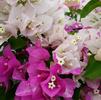
|
BougainvilleaBotanical Name: Bougainvillea x 'White Touch of Pink'
Bougainvillea is one of the most captivating blooming vines used around Texas. Native to South America, these thorny woody vines grow up to 30 feet long in warm climates; semi-evergreens that drop their leaves in colder climates. Popular in hanging baskets or containers so that they can be protected in the colder regions as freezing temperatures can kill them. [ More Info ]
|
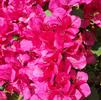
|
Bougainvillea, Barbara Karst (Red)Botanical Name: Bougainvillea x 'Red Barbara Karst'
Bougainvillea is one of the most captivating blooming vines used around Texas. Native to South America, these thorny woody vines grow up to 30 feet long in warm climates; semi-evergreens that drop their leaves in colder climates. Popular in hanging baskets or containers so that they can be protected in the colder regions as freezing temperatures can kill them. [ More Info ]
|
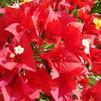
|
Bougainvillea, FlameBotanical Name: Bougainvillea x 'Flame'
Bougainvillea is one of the most captivating blooming vines used around Texas. Native to South America, these thorny woody vines grow up to 30 feet long in warm climates; semi-evergreens that drop their leaves in colder climates. Popular in hanging baskets or containers so that they can be protected in the colder regions as freezing temperatures can kill them. [ More Info ]
|

|
Bougainvillea, Juanita Hatten (Red)Botanical Name: Bougainvillea x 'Juanita Hatten'
Bougainvillea is one of the most captivating blooming vines used around Texas. Native to South America, these thorny woody vines grow up to 30 feet long in warm climates; semi-evergreens that drop their leaves in colder climates. Popular in hanging baskets or containers so that they can be protected in the colder regions as freezing temperatures can kill them. Juanita Hatten cultivar is one very similar to Barbara Karst, however the new foliage has a tinge of variegation that goes away as they mature. [ More Info ]
|
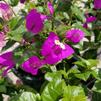
|
Bougainvillea, PurpleBotanical Name: Bougainvillea x 'Flame'
Bougainvillea is one of the most captivating blooming vines used around Texas. Native to South America, these thorny woody vines grow up to 30 feet long in warm climates; semi-evergreens that drop their leaves in colder climates. Popular in hanging baskets or containers so that they can be protected in the colder regions as freezing temperatures can kill them. [ More Info ]
|
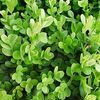
|
Boxwood, JapaneseBotanical Name: Buxus microphylla 'Japonica'
This Japanese native shrub is no stranger to the landscape, as it’s often the plant of choice for trimmed hedges, topiaries, and bonsai sculptures. Japanese Boxwood is an evergreen shrub with a multiple branching habit – combined with the dense growth habit of the leaves it naturally forms a thick round form. The glossy bright green leaves that only grow an inch give it a very uniformed feel when regularly trimmed or pruned. There are no noticeable flower or fruit characteristics. It’s important that the ground it is planted in has adequate drainage to avoid root rot; roots tend to stay shallow, so a thick layer of mulch can help maintain moisture. Appreciates morning sun and light, filtered afternoon shade. [ More Info ]
|
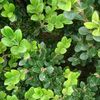
|
Boxwood, WintergemBotanical Name: Buxus microphylla 'Winter Gem'
This Japanese native shrub is no stranger to the landscape, as it’s often the plant of choice for trimmed hedges, topiaries, and bonsai sculptures. Japanese Boxwood is an evergreen shrub with a multiple branching habit – combined with the dense growth habit of the leaves it naturally forms a thick round form. “Winter Gem” has glossy dark green leaves that only grown an inch give it a much uniformed feel when regularly trimmed or pruned. There are no noticeable flower or fruit characteristics. It’s important that the ground it is planted in has adequate drainage to avoid root rot; roots tend to stay shallow, so a thick layer of mulch can help maintain moisture. Appreciates morning sun and light, filtered afternoon shade. [ More Info ]
|
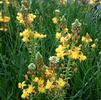
|
BulbineBotanical Name: Bulbine frutescens
South African native herbaceous perennial ideal for hot and dry Texas landscapes. Displays racemes of orange-yellow flowers throughout the warm months and spreads easily through the rhizome offsets and seeds. Grows best in well-drained soils, pest and maintenance free. [ More Info ]
|
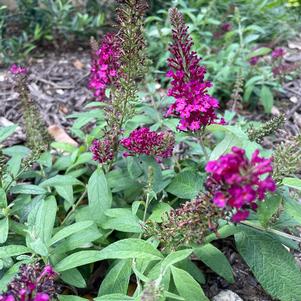
|
Butterfly Bush 'Chrysalis Cranberry'Botanical Name: Buddelia hybrid 'Chrysalis Cranberry'
Buddleia, commonly known as butterfly bush, is a genus of flowering plants that are known for attracting butterflies and other pollinators with their fragrant and colorful flowers. Buddleia plants are often grown for their ornamental value in gardens and landscaping. They are relatively easy to grow and can adapt to a wide range of soil conditions. Buddleias prefer full sun and well-drained soil. Chrysalis Cranberry is a trademarked plant that will stay in a compact form, avoiding that open weedy habit of a normal Buddleia. [ More Info ]
|
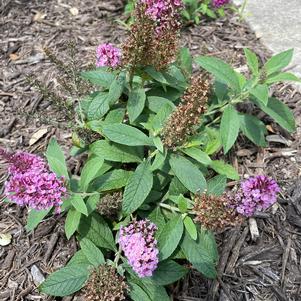
|
Butterfly Bush 'Chrysalis Pink'Botanical Name: Buddelia hybrid 'Chrysalis Pink'
Buddleia, commonly known as butterfly bush, is a genus of flowering plants that are known for attracting butterflies and other pollinators with their fragrant and colorful flowers. Buddleia plants are often grown for their ornamental value in gardens and landscaping. They are relatively easy to grow and can adapt to a wide range of soil conditions. Buddleias prefer full sun and well-drained soil. Chrysalis Pink is a trademarked plant that will stay in a compact form, avoiding that open weedy habit of a normal Buddleia. [ More Info ]
|
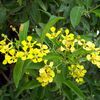
|
Butterfly VineBotanical Name: Mascagnia macroptera
A vigorous evergreen vine native to the tropical regions of South America that has adapted well in the southern Texas landscape. The vine easily spreads up to 15 feet, however if the stems touch ground, they sprout roots, allowing them to spread even further. Climbs most surfaces with ease, but does best with trellises or fences. Intense yellow blooms that look like small orchids appear early in the summer and continue to appear till fall. Papery samara fruits form after flowering that resemble large butterfly wings, giving this vine its name. Mulch heavily in the winter as it is vulnerable to freezing temperatures and protects it through the heat of the summer. [ More Info ]
|
